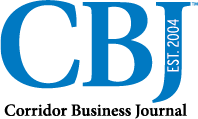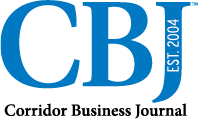
In the insurance industry, we often talk about increased costs associated with claims and lawsuits against businesses. We live in a highly litigious society where court fees, defense costs, and settlements continue to rise. There are multiple contributing factors to this trend, but recently one has been a transformative force in the legal arena and that is third-party litigation funding (TPLF).
Third-party litigation funding involves financial entities or investors providing capital to plaintiffs to cover legal expenses. In return, these funders receive a portion of any settlement or judgment awarded. Several different types of entities are typically involved in third-party funding including hedge funds, private equity firms, specialized litigation funding firms, and even individual investors.
On one hand, you could say this type of engagement in the legal process levels the playing field. It allows individuals and smaller entities to take on well-resourced defendants. On the other hand, you could say the justice system is being used as a profit center by otherwise uninterested parties.
On average, funded cases result in settlements 20-30% higher than cases without that kind of support. Typically, cases that have a high likelihood of substantial potential damages and settlements are the ones being backed, making cases against businesses a perfect target.
Defending against well-funded plaintiffs often requires substantial financial resources and time, even if the business ultimately prevails in court.
For manufacturing businesses, there is significant exposure in several areas. A few of them are:
- Product liability claims
- Employment practices disputes, such as harassment or wrongful termination
- Injured employees and workers’ compensation
- Auto accidents
- Environmental issues
- Patent infringement
These types of claims already have inherent challenges with high settlement potential and the duration of the litigation process. TPLF presents an added element that pours salt in an open wound, with far-reaching implications that extend well beyond the courtroom for manufacturers. The financial strain, operational disruptions, and reputational damage can be significant, impacting a business’ ability to innovate and thrive in a competitive market.
On the insurance side of the equation, it has brought revised risk assessment models and policy adjustments to help balance higher claims frequency and final settlements. This also influences the underwriting process as insurance companies do their best to forecast losses and determine profitable loss ratios. Larger potential claims can mean higher rates and premiums.
As a private business, it is important to adopt proactive risk management strategies to mitigate claims and increases. This includes strengthening compliance programs, enhancing contract provisions, investing in robust legal defenses, and securing comprehensive insurance coverage.
By understanding and addressing the negative implications of TPLF, manufacturers can better protect themselves from the increasing legal challenges posed by well-funded plaintiffs. As the TPLF market continues to evolve, manufacturers must remain vigilant and adaptable, leveraging best practices and innovative solutions to navigate this complex and dynamic environment.
Do you have questions about this or need help developing those best practices to address TPLF? Don’t hesitate to contact our Holmes Murphy Manufacturing experts. We’d be happy to chat with you.








